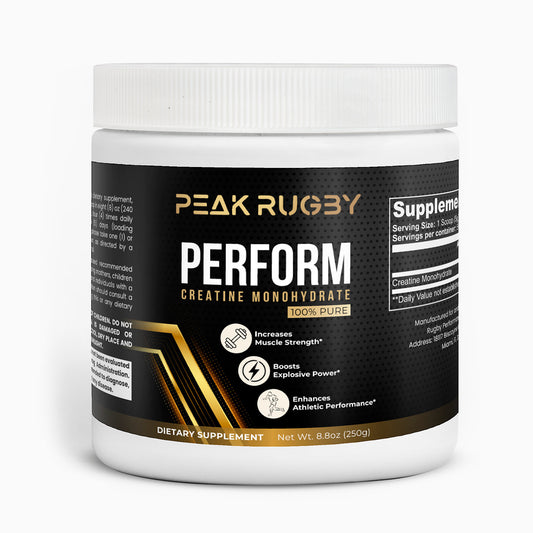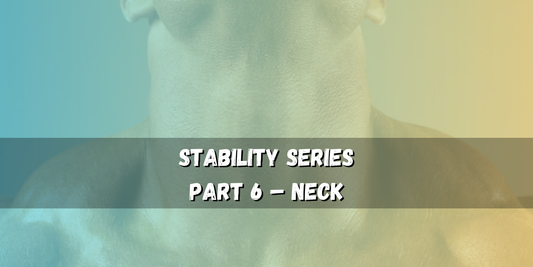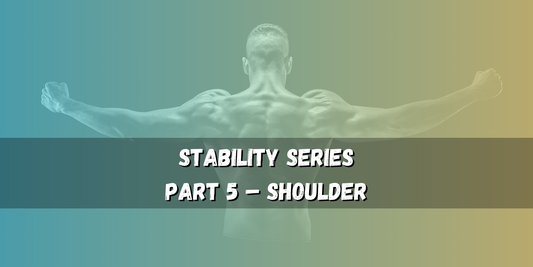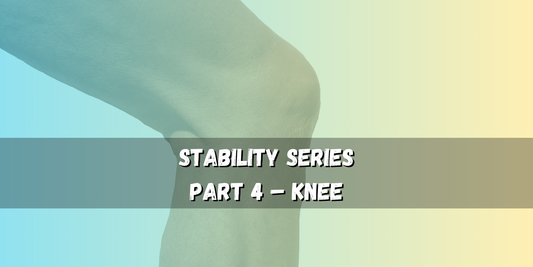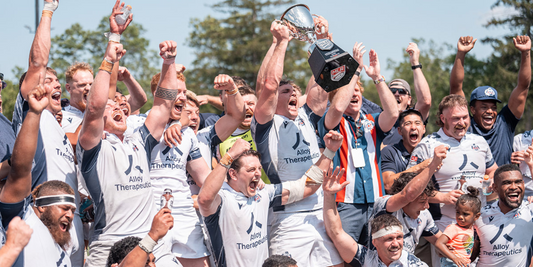Strength, power, speed, and resilience on the field all start with one thing: the way you train off it.
That’s why we’re launching the How to Build Series—a step-by-step guide to developing the key physical attributes every rugby player needs. Whether you’re just starting out or looking to level up your performance, this series will break down what to train, why it matters, and how to build it the right way.
Each article focuses on a specific area of the body or element of athletic performance, showing you how to develop it with rugby in mind—not bodybuilding or general fitness. You’ll also get the chance to download free PDF guides with routines, video links, and detailed instructions to plug directly into your weekly training.
Here’s how the series looks like:
- Part 1: How to Build a Strong Core for Rugby
- Part 2: How to Build Strong Legs for Rugby
- Part 3: How to Build Strong Shoulders for Rugby
- Part 4: How to Build a Strong Back for Rugby
- Part 5: How to Build a Strong Neck for Rugby
- Part 6: How to Build Strong Wrists and Grip for Rugby
- Part 7: How to Build Strength for Rugby
- Part 8: How to Build Power for Rugby
- Part 9: How to Build Speed for Rugby
Let’s kick it off where it all starts: your core.
WHAT IS "THE CORE" REALLY?
The core is more than just your abs—it includes the full 3D space of the Lumbo-Pelvic-Hip Complex (LPHC), which contains 29 muscles that stabilize the trunk and spine.
These muscles fall into three categories:
1. Local Stabilizers
Deep core muscles that maintain posture and segmental spinal stability:
- Transverse abdominis
- Multifidus
- Pelvic floor
- Diaphragm
- Internal obliques
- Fascia supporting these regions
These muscles function eccentrically and are crucial for low-load stability work.
2. Global Stabilizers
More superficial muscles that help transfer force:
- Internal/External obliques
- Erector spinae
- Gluteus medius
- Psoas major
- Quadratus lumborum
They provide both eccentric control and torque generation, especially during movements like sidesteps, offloads, or defensive shifts .
3. Global Mobilizers
- Rectus abdominis
- Iliocostalis
- Piriformis
These generate large, explosive movements like trunk flexion during a fend or counter-rucking.
WHY CORE STRENGTH MATTERS IN RUGBY
Whether you’re stepping into a ruck, breaking tackles, or sprinting in open space, your core is the power center that connects every movement. In rugby, core strength isn’t just about abs—it’s about dynamic stability, rotational power, and injury prevention across all planes of motion.
A strong core improves:
- Trunk-to-limb force transfer (more power in tackles, passes, and sprints)
- Postural control under fatigue
- Balance and movement efficiency
- Injury prevention, especially in the lower back, hips, and shoulders
RUGBY-SPECIFIC CORE DEMANDS
In rugby, core training should reflect the demands of the sport:
- Multi-directional stability (scrumming, sidestepping, contesting the ball)
- Rotational power (passing, kicking, tackling)
- Isometric control (static positions in mauls, tackles, rucks)
- Unilateral strength (running, accelerating, changing direction)
This means we need more than crunches. We need a combination of isometric holds, rotational control, anti-extension, and anti-rotation work.
THE PROGRESSION: HOW TO TRAIN THE CORE LIKE A RUGBY ATHLETE
1. Activate and Stabilize
Start with simple motor control drills and isometric holds to recruit local stabilizers:
- Abdominal bracing
- Bird dog holds
- Side planks
- Dead bugs
2. Build Endurance and Strength
Once control is solid, build strength and muscular endurance using:
- Standard planks with progressions
- Glute bridges with bracing
- Unilateral carries (suitcase or front rack)
- Cable rotations or Pallof presses
These movements enhance spinal support and improve rugby-relevant movement integrity .
3. Develop Dynamic Power
Move toward more explosive and sport-specific core work:
- Cable woodchops
- Rotational med ball throws
- Offset loaded carries
- Anti-rotation banded work (stir-the-pot, plank reaches)
All training should move from stable > unstable, slow > fast, and simple > complex to match sport demands .
KEY TAKEAWAY: CORE STRENGTH = RUGBY PERFORMANCE
Training your core is about building a foundation that supports everything else: speed, strength, balance, and durability. If you skip this, you increase your risk of injury and limit your performance ceiling.
WANT A FREE CORE TRAINING ROUTINE?
Want a simple, effective core routine you can plug into your training right away? Enter your email below to get your free copy. We’ll send it straight to your inbox.
This free PDF includes 5 rugby-specific core routines—you’ll get:
- Clear exercise breakdowns
- Coaching cues and rep schemes
- Video links for each movement
- Routines designed to build strength, stability, and control
Get started today and build the strong, stable core your game demands.
If you found this article helpful, don’t forget to:
- Like and share this post with your teammates and fellow rugby fans
- Bookmark the blog to stay updated on the next rounds
- Follow @gopeakrugby on X and Facebook and subscribe to our Youtube Channel for more rugby analysis, match recaps, and insights



